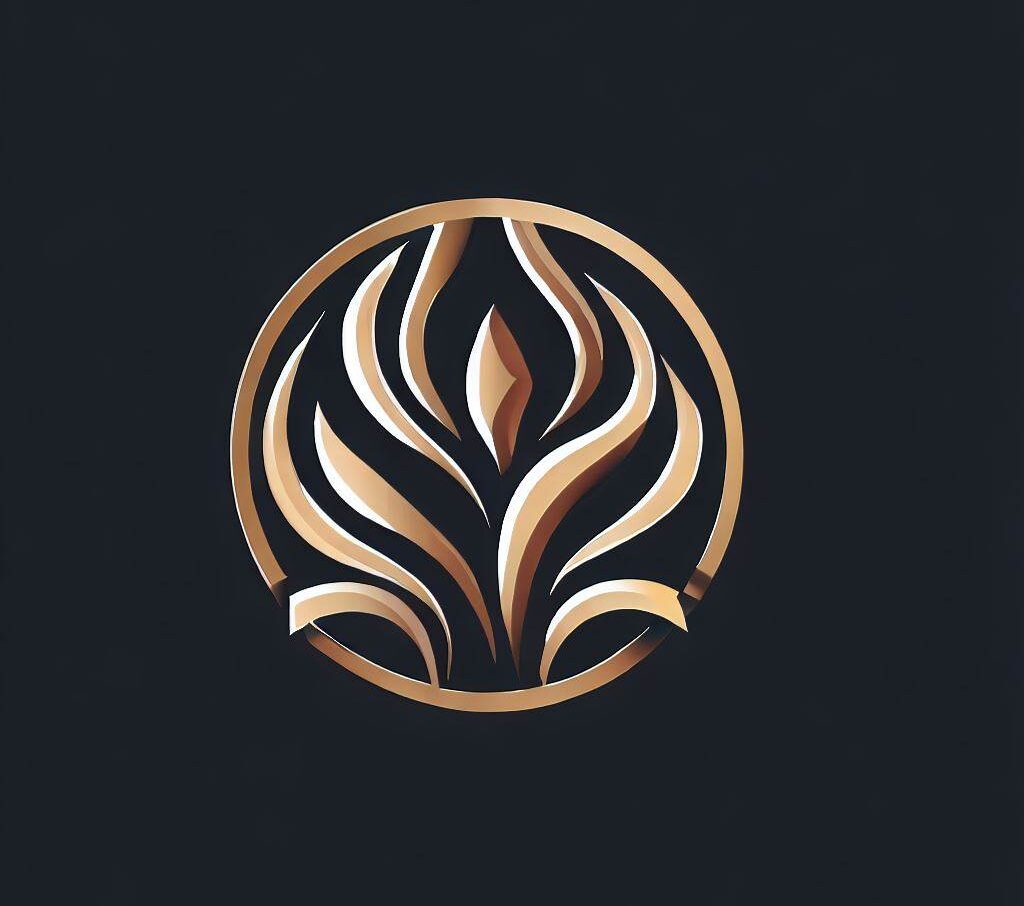The upside-down triangle holds a rich biblical meaning that offers profound insights into the spiritual realm and divine symbolism. In various cultures and spiritual traditions, this unique geometric shape represents a connection to higher realms or the divine. It is often associated with the feminine energy or the divine feminine principle, symbolizing balance, unity, and spiritual awakening.
In biblical contexts, the upside-down triangle carries significant symbolism. It represents the manifestation of God’s grace, divine reversal, and personal transformation. It signifies the presence of the divine in the earthly realm and the transformative power of His grace. The upside-down triangle offers a profound understanding of the metaphysical realm and its connection to the divine.
Key Takeaways:
- The upside-down triangle symbolizes a connection to higher realms and the divine.
- It is often associated with the feminine energy or the divine feminine principle.
- In biblical contexts, the upside-down triangle represents the manifestation of God’s grace and divine reversal.
- It signifies personal transformation and the presence of the divine in the earthly realm.
- The upside-down triangle carries symbolic meaning in other spiritual traditions, such as Hinduism and Buddhism.
The Divine Reversal: Manifestation of God’s Grace
The upside-down triangle in biblical interpretation signifies a divine reversal, a powerful symbol of God’s grace and the miraculous transformation it brings. This geometric shape, when inverted, represents the inversion of worldly norms and the manifestation of God’s divine intervention. It serves as a reminder that God’s grace can turn any situation upside-down, bringing about unexpected outcomes and blessings.
Throughout the Bible, there are references to the upside-down triangle that highlight the divine reversal. One such example is found in the story of Jonah, where his disobedience leads to his being thrown into the sea and swallowed by a great fish. Despite this seemingly dire circumstance, Jonah experiences a divine reversal when he repents and is spit out onto dry land, given a second chance to fulfill God’s purpose.
This symbolism of the upside-down triangle reflects the transformative power of God’s grace in our lives. Just as Jonah’s disobedience was turned into an opportunity for redemption, God has the ability to turn our struggles, failures, and despair into hope, restoration, and new beginnings. This concept of divine reversal encourages us to trust in God’s mercy and believe that He can bring about miraculous changes in our lives.
The Divine Reversal: Manifestation of God’s Grace
| Biblical References | Symbolism |
|---|---|
| Jonah 2:10 | The belly of the fish as a place of transformation and rebirth |
| Esther 9:1 | The Jews’ victory over their enemies, turning the tables in their favor |
| Luke 1:52 | God’s exaltation of the humble and the bringing down of the proud |
The upside-down triangle in biblical interpretation serves as a constant reminder of God’s ability to bring about positive change, even in the most challenging circumstances. It is a symbol of hope, highlighting the extraordinary ways in which God’s grace can transform our lives. By embracing this symbolism, we can find solace and strength in knowing that God’s divine reversal is always possible, bringing blessings that surpass our understanding.
The Divine Feminine and Spiritual Awakening
The upside-down triangle holds a special spiritual significance, often associated with the divine feminine energy and the awakening of one’s spiritual consciousness. In various spiritual traditions, this unique geometric shape symbolizes balance, unity, and the harmonious union of masculine and feminine energies. Its presence in the realm of spirituality represents a deep connection to higher realms or the divine.
In Hinduism, the upside-down triangle embodies the divine feminine energy, known as Shakti. It signifies the creative and nurturing aspects of the universe and represents the harmonious union of the masculine and feminine principles. This symbol is often found in depictions of goddesses such as Durga and Kali, who embody the power and strength of the divine feminine.
In Buddhism, the upside-down triangle represents the journey from ignorance to enlightenment. It symbolizes the interdependent and interconnected nature of existence, referred to as the three jewels: the Buddha, the Dharma (teachings), and the Sangha (community). This geometric shape encapsulates the spiritual awakening and the realization of the interconnectedness of all things.
Quotes:
“The upside-down triangle represents the awakening of the divine feminine within each of us and serves as a reminder of our interconnectedness with the universe.” – Spiritual Teacher
“The spiritual significance of the upside-down triangle lies in its representation of unity, balance, and the transformative power of spiritual awakening.” – Religious Scholar
Summary:
The upside-down triangle carries deep spiritual meaning, signifying the divine feminine energy, the awakening of spiritual consciousness, and the interconnectedness of all beings. In Hinduism, it represents the harmonious union of masculine and feminine energies, while in Buddhism, it symbolizes the journey from ignorance to enlightenment. This geometric shape serves as a powerful reminder of our connection to the divine and the transformative potential of spiritual awakening in our lives.
| Religion/Spiritual Tradition | Symbolism of Upside-Down Triangle |
|---|---|
| Hinduism | Divine feminine energy, harmony of masculine and feminine energies |
| Buddhism | Journey from ignorance to enlightenment, interconnectedness |
| Christianity | Manifestation of God’s grace, divine reversal, personal transformation |
Triangle Symbolism in Christianity
The triangle symbolism holds a significant place in Christianity, with the upside-down triangle carrying specific religious meanings and biblical connotations. In Christian art and symbolism, the triangle often represents the Holy Trinity – the Father, Son, and Holy Spirit. It is a powerful symbol of divine unity and the interrelationship between these three distinct aspects of God.
Furthermore, the upside-down triangle is sometimes associated with the concept of surrender and humility in Christianity. It represents the reversal of worldly values and the willingness to submit oneself to God’s will. This symbolism is rooted in the teachings of Jesus, who emphasized the importance of humility and selflessness.
One biblical reference that showcases the upside-down triangle’s religious meaning is found in the Beatitudes, specifically in Matthew 5:3-12. Jesus delivers a sermon on the mount, describing the characteristics and blessings of those who embody a humble and righteous life. This passage is often referred to as the “Sermon on the Mount” and highlights the transformative power of embracing a reversed perspective of worldly values.
| Symbolism | Meaning |
|---|---|
| Unity | The interconnection of the Father, Son, and Holy Spirit in the Holy Trinity |
| Humility | The willingness to submit oneself to God’s will |
| Divine reversal | The transformation of worldly values through surrender to God |
Overall, the triangle symbolism in Christianity, particularly the upside-down triangle, represents the divine unity, humility, and transformative power found in the teachings of Jesus and the Holy Scriptures. It serves as a visual reminder of the profound spiritual principles and values that Christians strive to embody in their faith and daily lives.
Upside-Down Triangle in Other Spiritual Traditions
The upside-down triangle finds its place not only in Christianity but also in other spiritual traditions such as Buddhism and Hinduism, each with unique interpretations and symbolic associations. In Buddhism, the upside-down triangle carries deep significance as it represents the journey from ignorance to enlightenment. It symbolizes the interconnectedness of the three jewels – the Buddha, the Dharma (teachings), and the Sangha (community), all working together to lead one towards spiritual awakening. This triangular symbol emphasizes the balance, unity, and harmony necessary to transcend worldly suffering and attain enlightenment.
In Hinduism, the upside-down triangle holds great spiritual significance, particularly in relation to the divine feminine energy. It represents the Shakti, the dynamic and creative divine feminine principle. This inverted triangle, known as the Shri Yantra, symbolizes the union of feminine and masculine energies and their harmonious coexistence. It signifies the balance between the material and spiritual realms, the energy of manifestation, and the divine grace that flows through all of creation.
The upside-down triangle in various spiritual traditions points to a universal understanding of its symbolism. Across different cultures, the inverted triangle represents a connection to higher realms or the divine presence. It symbolizes not only personal transformation but also the manifestation of divine grace and spiritual awakening. This sacred geometric shape acts as a reminder of the deep spiritual connection and understanding that exists beyond the physical realm, inviting individuals to explore their own spiritual journeys and seek the harmonious energies that lie within.
| Spiritual Tradition | Symbolism |
|---|---|
| Buddhism | Journey from ignorance to enlightenment, interconnectedness of the three jewels |
| Hinduism | Divine feminine energy, harmonious union of masculine and feminine energies |
| Christianity | Manifestation of God’s grace, divine reversal, personal transformation |
The upside-down triangle is a powerful symbol that traverses various spiritual traditions, each offering unique insights and interpretations. Its presence in Buddhism and Hinduism highlights the universal nature of this geometric shape and its ability to convey profound spiritual truths. Whether representing the journey from ignorance to enlightenment or the harmonious union of energies, the upside-down triangle reminds us of the deeper spiritual connection and understanding that exists beyond the physical world.
Conclusion
The upside-down triangle, with its biblical triangle symbolism and spiritual implications, serves as a powerful reminder of the divine presence and the transformative potential of faith. In various cultures and spiritual traditions, the upside-down triangle holds significant meaning, symbolizing a connection to higher realms and the divine.
In the realm of spirituality, the upside-down triangle is often associated with the feminine energy or the divine feminine principle. It represents balance, unity, and spiritual awakening, reflecting the harmonious union of masculine and feminine energies.
In biblical interpretations, the upside-down triangle embodies the manifestation of God’s grace. It signifies the concept of divine reversal, where God’s presence brings about personal transformation and the turning of worldly situations for the better. This geometric shape serves as a powerful symbol of the divine’s active role in the earthly realm.
Furthermore, the upside-down triangle holds significant meaning in Hinduism and Buddhism. In Hinduism, it represents the divine feminine energy and the harmonious balance between masculine and feminine forces. In Buddhism, the upside-down triangle embodies the journey from ignorance to enlightenment, reflecting the interconnectedness of the three jewels of Buddhism – the Buddha, the Dharma, and the Sangha.
Overall, the upside-down triangle signifies a deep spiritual connection and understanding of the metaphysical realm. It serves as a reminder of the divine’s presence in our lives and the transformative potential of faith. As we explore the various symbolism associated with this geometric shape, we gain a deeper appreciation for the profound spiritual truths it represents.
FAQ
Q: What does the upside-down triangle symbolize in different cultures and spiritual traditions?
A: The upside-down triangle carries various meanings in different cultures and spiritual traditions. It represents a connection to higher realms or the divine and is often associated with the feminine energy or the divine feminine principle. It symbolizes balance, unity, and spiritual awakening.
Q: What is the biblical meaning of the upside-down triangle?
A: In a biblical context, the upside-down triangle can represent the manifestation of God’s grace, divine reversal, personal transformation, and the presence of the divine in the earthly realm.
Q: How is the upside-down triangle symbolized in Hinduism?
A: In Hinduism, the upside-down triangle symbolizes the divine feminine energy and the harmonious union of masculine and feminine energies.
Q: What does the upside-down triangle signify in Buddhism?
A: In Buddhism, the upside-down triangle represents the journey from ignorance to enlightenment and the interconnectedness of the three jewels – the Buddha, the Dharma (teachings), and the Sangha (community).
Q: What is the overall significance of the upside-down triangle?
A: Overall, the upside-down triangle signifies a deep spiritual connection and understanding of the metaphysical realm.
Source Links
- https://askmormongirl.com/spirituality/upside-down-triangle-symbol-spiritual-meaning/
- https://spiritualecho.com/upside-down-triangle-symbol-spiritual-meaning/
- https://www.remnantinthewilderness.com/post/the-inverted-triangle-in-the-logo-of-the-church-of-christ






